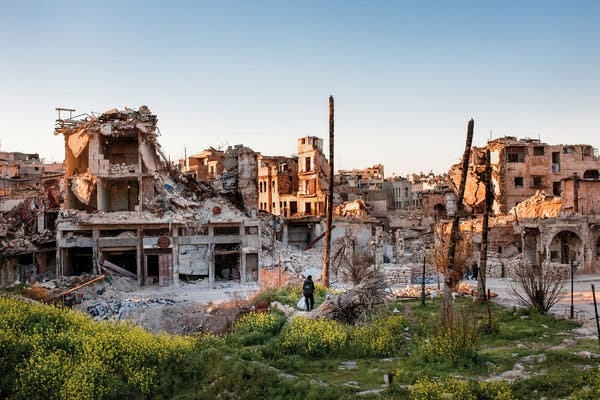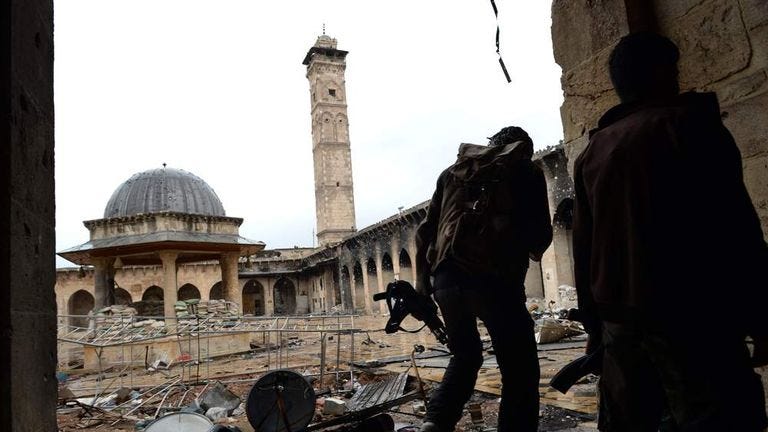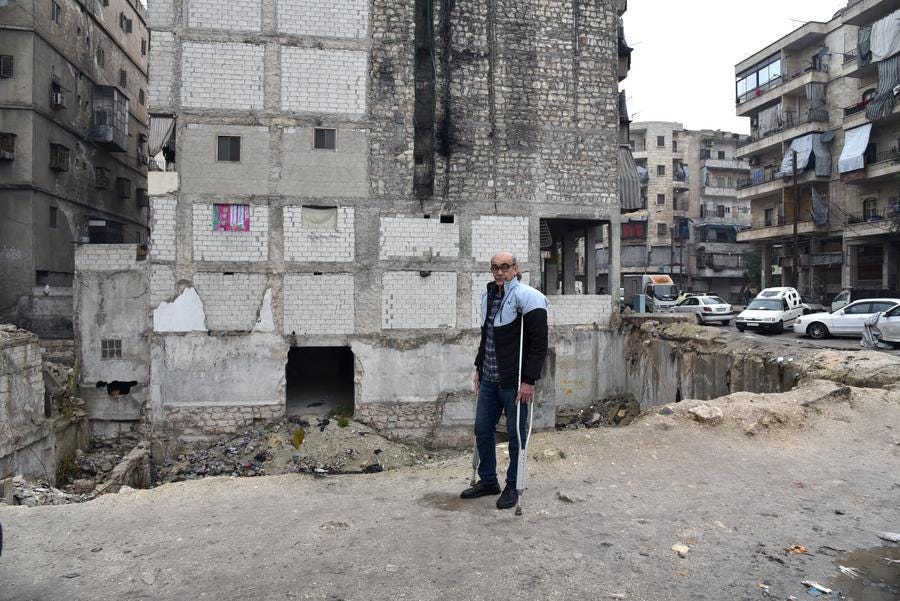Colin Nagy | April 3, 2025
The Rebuilding Aleppo Edition
On restoring without myth-making, physical memory, and Syria after Assad.
Colin here. I've been thinking a lot about who gets to decide how we remember. Not in the abstract sense of stories taught in schools, but about the literal physical spaces that embody memory. Few places offer a better case study than post-Assad Aleppo, in Syria, where the question of how to rebuild is suddenly up for grabs.
Why is this interesting?
The physical rebuilding of Aleppo offers a window into how societies reconstruct not just buildings, but narratives about themselves.
When Syria's civil war engulfed Aleppo in 2011, it obliterated the physical embodiment of the city's 8,000-year history. The ancient citadel took hits, the minaret of the 12th-century Umayyad Mosque came crashing down, and the covered souks, continuously active since the 14th century, were largely turned to rubble.
By 2016, UNESCO estimated that 60% of Aleppo's Old City had been severely damaged or destroyed.
As I dug into it a bit more, however, I realized the assault on the country’s physical heritage had begun long before. For decades, the Assad regime curated historic sites to tell a very specific story: Syrian Arab nationalism, anti-colonial resistance, and Ba'athist triumph. Certain areas of culture and history were down ranked in the algo: Turkish inscriptions disappeared during 1990s "restorations" of historic buildings. Late Ottoman structures were selectively demolished to create an artificial historical purity. Trouble was, it wasn't real.
In the wake of Assad's fall last December, this controlled narrative has given way to competing visions. France24 reports that the initial "euphoria is slowly giving way to reality as local residents come to terms with the challenges of reconstruction."
Under the previous regime, the approach would have been straightforward: recreate an idealized version that aligned with the official story. But there are a wider range of voices coming to the table now, debating which parts of damaged structures to preserve as witnesses to the war, and which to rebuild. (There are obvious parallels, among others, to post-war Berlin, and the demolition of the Berlin Palace in 1950.)
Everyone doesn't have an equal and fair say. International organizations and rich Gulf states with eyes on reconstruction contracts still have outsized influence. Craftspeople with knowledge of traditional building techniques now have more authority than they did before. People that lived there and sheltered in the structures should also have a say.
This creates another interesting melange of pressures, influence, and prioritization. And it begs the question: What will the dominant point of view be when it comes to reconstruction? When a fallen regime monopolized the official story for decades, its leftover physical environment becomes contested terrain.
The questions playing out in Aleppo today—who owns history, who gets to shape the narrative, how to honor multiple truths—are important questions that don't always make the biggest headlines, but have lasting effects on culture and memory.
These aren't abstract concerns. From the debates over Confederate monuments in the American South to contested colonial architecture across Europe, we're all grappling with how the built environment shapes our understanding of the past. Aleppo just offers us the rare opportunity to watch this process unfold in real time, with the source code open to see. (CJN)


